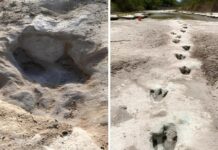Four Mycenaean corbel arch constructions in the Greek villages of Mycenae and Arkadiko are regarded to be among the world’s oldest bridges. Two of them have been used for at least 3,000 years.

All of the bridges share a same design and date from the Bronze Age in Greece, connecting Mycenae, Tiryns, Tolo, and Epidaurus. They are the oldest arch bridges still in operation, built between 1300 and 1190 BCE. (A 4,000-year-old bridge over an ancient stream was recently revealed to be Iraq’s Bridge of Girsu. Until that moment, the Mycenaean bridges were regarded to be the world’s oldest bridges.
The roads and bridges were part of a larger military road network and were built using massive uneven limestone slabs. Furthermore, the bridges were built to last. The Arkadiko and Petrogephyri bridges continue to be used for local agricultural purposes.

Arkadiko Bridge, like the other bridges, was built with Cyclopean masonry, which requires meticulously fitting tiny stones, limestone boulders, and tile pieces without the use of cement. It is 18 feet wide, 72 feet long, and 13 feet tall.
The old bridge is still safe for pedestrian traffic, and residents utilise it on occasion. However, this was not the original intention. Based on its architectural design, archaeologists concluded that the bridge was built specifically for chariots. Even the curbs that were designed to direct horse-drawn carriages remain. Yes, it is still capable of supporting a contemporary chariot.

Petrogephyri Bridge, the other old bridge still in use, spans the same stream one km west of Arkadiko Bridge. This construction is similar in size and form to the previous one, but it has a broader span and a somewhat taller vault.
A fifth, well-preserved Mycenaean bridge may be seen in the surrounding region, at Lykotroupi in northern Argolis, along another Mycenaean major route. It is relatively comparable in size to Arkadiko Bridge, with measurements of 5.20 metres (17.1 feet) broad at the bottom, 2.40 metres (7 ft 10 inches) wide at the top, and a corbelled arch span of slightly over a metre. There are still curbs on that path to direct chariots.

The two still-standing bridges, as well as their remains, are part of human history. Despite this, none of them have been fully explained or exhibited until today. In terms of construction, one of the bridges is in jeopardy, therefore archaeologists are urging people to take care.






